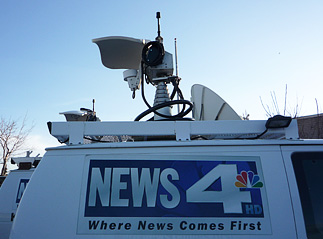Finally Digital
SEATTLE
For free! Nextel (which became Sprint Nextel) promised they were going to replace any Broadcast Auxiliary Service (BAS) license holder's analog microwave equipment, no matter how old it was, for new, free digital microwave equipment as part of the 2 GHz relocation program.
For free! And still, BAS operators looked into the mouth of that gift horse and wrung their hands. History had shown them that as digital equipment crept into their infrastructure, things didn't always work as advertised, and downside tradeoffs (like lip-sync problems) came with the upside advantages. Since some news microwave operations were operating on the ragged edge to begin with, who needed a new monkey wrench in the form of a digital learning curve to be thrown into the pot?
But now, with more than 70 broadcast markets already cut over to the new BAS channels—requiring all licensees to operate digitally—and many dozens more stations using their digital gear ahead of their market's cutover, the sky appears not to have fallen at all.
PLAYING BILLIARDS

Reno's KRNV-TV found it can use just a vertical omnidirectional antenna to transmit live shots while their ENG vans are moving. "The most striking thing is the ability to get shots from where we had no idea it was even possible to get them," said David Feher, corporate director of engineering for Sunbelt Communications. "We continue to amaze ourselves as to how we're able to get shots to any of our several receive headend points, under conditions that you would scratch your head and wonder how is this possible."
In particular, Feher pointed to Sunbelt's KRNV-TV in Reno and the challenges it faced getting live shots out of the city's downtown, with towering buildings all around. With the digital equipment, "we're playing billiards most of the time," he said. "We're actually getting a signal, by double bank shot, to one of our receive sites."
The so-called "cliff effect," where video from a digital signal looks perfect right up to the point that it disappears altogether, is often considered a disadvantage. But Feher said the NBC affiliate has had good experiences operating just 1dB of margin above the noise floor when they're quite a distance from the receive site, and not line of sight to it.
This comes into play when "we have a bit of a terrain edge to deal with, and we have to rely on what is apparently amounting to diffraction over the edge of that geographic impediment," he said. "And so we end up with a very small margin to the noise floor, but fortunately it's very steady, unless a snow shower or heavy rain shower moves through." KRNV specified RF Central gear for their BAS equipment swap.
AIR AND GROUND
Ted Hand, chief engineer at ABC affiliate WSOC-TV in Charlotte, N.C., has also been surprised at the performance of his station's digital microwave equipment. "With the digital we actually receive from locations where we had not been able to receive before," he said. The station installed 10-inch omni antennas on two of its news vans, "and we have been able to do drive around liveshots now in Charlotte." Hand has also been impressed with the performance of microwave shots from the station's aircraft. "We do high definition with our helicopter... we've done high definition out 40-50 miles with it."
He gives credit for WSOC's digital microwave success to the training station personnel got through the BAS relocation program, and by monitoring the RF environment displayed on their spectrum analyzers. The station has spectrum analyzer readouts networked to a pair of operator positions in ENG Control, and a third readout in master control, where liveshots are operated in the mornings and on weekends.
"In the early days we lost several shots, when we thought they were there but really they weren't," Hand said. "But once we got everybody in tune to it, this worked great." WSOC has six receive sites in the Charlotte area. The station chose Microwave Radio Communica-tions to replace its analog RF gear.
While ENG crews do most microwave shots from the usual locations—where they know the characteristics of the terrain, receive sites and those they share the 2-gig spectrum with—those who supply microwave services for hire find themselves in unfamiliar conditions on a daily basis. "We get into situations because we're here, there and everywhere, that the normal TV station may not have to get into," said Tom Borgess, owner of Skyking Microwave Services, a Los Angeles-based microwave rental and services provider.
Borgess echoed Hand's opinion on the importance of a spectrum analyzer for digital microwave operation. "Initially I had some inexpensive spectrum analyzers that had a very slow refresh rate, and there were times we could not see the problem." Now he sends a high quality spectrum analyzer with a high refresh rate on every job.
Borgess said he finds real improvement in digital microwave's ability to deliver a live link from a moving platform, like a vehicle or aircraft. He not only credits COFDM modulation with eliminating multipath interference as signals, but finds other advantages in the modulation scheme.
Establishing a link with a blimp for game coverage at the baseball park in Tampa, "I had to shelter my antennas from the interference," he said. "My antenna placement became critical, using omnis and antennas with gain. I physically had to place them behind barriers to make the link work. Multipath helped me keep my signal up as the blimp orbited the stadium."
Skyking specified Global Microwave Systems (GMS) microwave gear in its BAS relocation replacement.
Get the TV Tech Newsletter
The professional video industry's #1 source for news, trends and product and tech information. Sign up below.
